RabbitMQ配置文件_修改RabbitMQ MQTT的1883端口
Centos离线安装RabbitMQ并开启MQTT
Docker安装rabbitMQ
RabbitMQ集群搭建和测试总结_亲测
Docker安装RabbitMQ集群_亲测成功
rabbitmq.conf
默认没有配置文件,可以手动创建: /etc/rabbitmq/rabbitmq.conf
# ======================================
# RabbitMQ broker section
# ======================================## Related doc guide: https://rabbitmq.com/configure.html. See
## https://rabbitmq.com/documentation.html for documentation ToC.## Networking
## ====================
##
## Related doc guide: https://rabbitmq.com/networking.html.
##
## By default, RabbitMQ will listen on all interfaces, using
## the standard (reserved) AMQP 0-9-1 and 1.0 port.
##
# listeners.tcp.default = 5672## To listen on a specific interface, provide an IP address with port.
## For example, to listen only on localhost for both IPv4 and IPv6:
##
# IPv4
# listeners.tcp.local = 127.0.0.1:5672
# IPv6
# listeners.tcp.local_v6 = ::1:5672## You can define multiple listeners using listener names
# listeners.tcp.other_port = 5673
# listeners.tcp.other_ip = 10.10.10.10:5672## TLS listeners are configured in the same fashion as TCP listeners,
## including the option to control the choice of interface.
##
# listeners.ssl.default = 5671## It is possible to disable regular TCP (non-TLS) listeners. Clients
## not configured to use TLS and the correct TLS-enabled port won't be able
## to connect to this node.
# listeners.tcp = none## Number of Erlang processes that will accept connections for the TCP
## and TLS listeners.
##
# num_acceptors.tcp = 10
# num_acceptors.ssl = 10## Socket writer will force GC every so many bytes transferred.
## Default is 1 GiB (`1000000000`). Set to 'off' to disable.
##
# socket_writer.gc_threshold = 1000000000
#
## To disable:
# socket_writer.gc_threshold = off## Maximum amount of time allowed for the AMQP 0-9-1 and AMQP 1.0 handshake
## (performed after socket connection and TLS handshake) to complete, in milliseconds.
##
# handshake_timeout = 10000## Set to 'true' to perform reverse DNS lookups when accepting a
## connection. rabbitmqctl and management UI will then display hostnames
## instead of IP addresses. Default value is `false`.
##
# reverse_dns_lookups = false##
## Security, Access Control
## ==============
#### Related doc guide: https://rabbitmq.com/access-control.html.## The default "guest" user is only permitted to access the server
## via a loopback interface (e.g. localhost).
## {loopback_users, [<<"guest">>]},
##
# loopback_users.guest = true## Uncomment the following line if you want to allow access to the
## guest user from anywhere on the network.
# loopback_users.guest = false## TLS configuration.
##
## Related doc guide: https://rabbitmq.com/ssl.html.
##
# listeners.ssl.1 = 5671
#
# ssl_options.verify = verify_peer
# ssl_options.fail_if_no_peer_cert = false
# ssl_options.cacertfile = /path/to/cacert.pem
# ssl_options.certfile = /path/to/cert.pem
# ssl_options.keyfile = /path/to/key.pem
#
# ssl_options.honor_cipher_order = true
# ssl_options.honor_ecc_order = true
#
## These are highly recommended for TLSv1.2 but cannot be used
## with TLSv1.3. If TLSv1.3 is enabled, these lines MUST be removed.
# ssl_options.client_renegotiation = false
# ssl_options.secure_renegotiate = true
#
## Limits what TLS versions the server enables for client TLS
## connections. See https://www.rabbitmq.com/ssl.html#tls-versions for details.
##
## Cutting edge TLS version which requires recent client runtime
## versions and has no cipher suite in common with earlier TLS versions.
# ssl_options.versions.1 = tlsv1.3
## Enables TLSv1.2 for best compatibility
# ssl_options.versions.2 = tlsv1.2
## Older TLS versions have known vulnerabilities and are being phased out
## from wide use.## Limits what cipher suites the server will use for client TLS
## connections. Narrowing this down can prevent some clients
## from connecting.
## If TLSv1.3 is enabled and cipher suites are overridden, TLSv1.3-specific
## cipher suites must also be explicitly enabled.
## See https://www.rabbitmq.com/ssl.html#cipher-suites and https://wiki.openssl.org/index.php/TLS1.3#Ciphersuites
## for details.
#
## The example below uses TLSv1.3 cipher suites only
#
# ssl_options.ciphers.1 = TLS_AES_256_GCM_SHA384
# ssl_options.ciphers.2 = TLS_AES_128_GCM_SHA256
# ssl_options.ciphers.3 = TLS_CHACHA20_POLY1305_SHA256
# ssl_options.ciphers.4 = TLS_AES_128_CCM_SHA256
# ssl_options.ciphers.5 = TLS_AES_128_CCM_8_SHA256
#
## The example below uses TLSv1.2 cipher suites only
#
# ssl_options.ciphers.1 = ECDHE-ECDSA-AES256-GCM-SHA384
# ssl_options.ciphers.2 = ECDHE-RSA-AES256-GCM-SHA384
# ssl_options.ciphers.3 = ECDHE-ECDSA-AES256-SHA384
# ssl_options.ciphers.4 = ECDHE-RSA-AES256-SHA384
# ssl_options.ciphers.5 = ECDH-ECDSA-AES256-GCM-SHA384
# ssl_options.ciphers.6 = ECDH-RSA-AES256-GCM-SHA384
# ssl_options.ciphers.7 = ECDH-ECDSA-AES256-SHA384
# ssl_options.ciphers.8 = ECDH-RSA-AES256-SHA384
# ssl_options.ciphers.9 = DHE-RSA-AES256-GCM-SHA384
# ssl_options.ciphers.10 = DHE-DSS-AES256-GCM-SHA384
# ssl_options.ciphers.11 = DHE-RSA-AES256-SHA256
# ssl_options.ciphers.12 = DHE-DSS-AES256-SHA256
# ssl_options.ciphers.13 = ECDHE-ECDSA-AES128-GCM-SHA256
# ssl_options.ciphers.14 = ECDHE-RSA-AES128-GCM-SHA256
# ssl_options.ciphers.15 = ECDHE-ECDSA-AES128-SHA256
# ssl_options.ciphers.16 = ECDHE-RSA-AES128-SHA256
# ssl_options.ciphers.17 = ECDH-ECDSA-AES128-GCM-SHA256
# ssl_options.ciphers.18 = ECDH-RSA-AES128-GCM-SHA256
# ssl_options.ciphers.19 = ECDH-ECDSA-AES128-SHA256
# ssl_options.ciphers.20 = ECDH-RSA-AES128-SHA256
# ssl_options.ciphers.21 = DHE-RSA-AES128-GCM-SHA256
# ssl_options.ciphers.22 = DHE-DSS-AES128-GCM-SHA256
# ssl_options.ciphers.23 = DHE-RSA-AES128-SHA256
# ssl_options.ciphers.24 = DHE-DSS-AES128-SHA256
# ssl_options.ciphers.25 = ECDHE-ECDSA-AES256-SHA
# ssl_options.ciphers.26 = ECDHE-RSA-AES256-SHA
# ssl_options.ciphers.27 = DHE-RSA-AES256-SHA
# ssl_options.ciphers.28 = DHE-DSS-AES256-SHA
# ssl_options.ciphers.29 = ECDH-ECDSA-AES256-SHA
# ssl_options.ciphers.30 = ECDH-RSA-AES256-SHA
# ssl_options.ciphers.31 = ECDHE-ECDSA-AES128-SHA
# ssl_options.ciphers.32 = ECDHE-RSA-AES128-SHA
# ssl_options.ciphers.33 = DHE-RSA-AES128-SHA
# ssl_options.ciphers.34 = DHE-DSS-AES128-SHA
# ssl_options.ciphers.35 = ECDH-ECDSA-AES128-SHA
# ssl_options.ciphers.36 = ECDH-RSA-AES128-SHA# ssl_options.bypass_pem_cache = true## Select an authentication/authorisation backend to use.
##
## Alternative backends are provided by plugins, such as rabbitmq-auth-backend-ldap.
##
## NB: These settings require certain plugins to be enabled.
##
## Related doc guides:
##
## * https://rabbitmq.com/plugins.html
## * https://rabbitmq.com/access-control.html
### auth_backends.1 = rabbit_auth_backend_internal## uses separate backends for authentication and authorisation,
## see below.
# auth_backends.1.authn = rabbit_auth_backend_ldap
# auth_backends.1.authz = rabbit_auth_backend_internal## The rabbitmq_auth_backend_ldap plugin allows the broker to
## perform authentication and authorisation by deferring to an
## external LDAP server.
##
## Relevant doc guides:
##
## * https://rabbitmq.com/ldap.html
## * https://rabbitmq.com/access-control.html
##
## uses LDAP for both authentication and authorisation
# auth_backends.1 = rabbit_auth_backend_ldap## uses HTTP service for both authentication and
## authorisation
# auth_backends.1 = rabbit_auth_backend_http## uses two backends in a chain: HTTP first, then internal
# auth_backends.1 = rabbit_auth_backend_http
# auth_backends.2 = rabbit_auth_backend_internal## Authentication
## The built-in mechanisms are 'PLAIN',
## 'AMQPLAIN', and 'EXTERNAL' Additional mechanisms can be added via
## plugins.
##
## Related doc guide: https://rabbitmq.com/authentication.html.
##
# auth_mechanisms.1 = PLAIN
# auth_mechanisms.2 = AMQPLAIN## The rabbitmq-auth-mechanism-ssl plugin makes it possible to
## authenticate a user based on the client's x509 (TLS) certificate.
## Related doc guide: https://rabbitmq.com/authentication.html.
##
## To use auth-mechanism-ssl, the EXTERNAL mechanism should
## be enabled:
##
# auth_mechanisms.1 = PLAIN
# auth_mechanisms.2 = AMQPLAIN
# auth_mechanisms.3 = EXTERNAL## To force x509 certificate-based authentication on all clients,
## exclude all other mechanisms (note: this will disable password-based
## authentication even for the management UI!):
##
# auth_mechanisms.1 = EXTERNAL## This pertains to both the rabbitmq-auth-mechanism-ssl plugin and
## STOMP ssl_cert_login configurations. See the RabbitMQ STOMP plugin
## configuration section later in this file and the README in
## https://github.com/rabbitmq/rabbitmq-auth-mechanism-ssl for further
## details.
##
## To use the TLS cert's CN instead of its DN as the username
##
# ssl_cert_login_from = common_name## TLS handshake timeout, in milliseconds.
##
# ssl_handshake_timeout = 5000## Cluster name
##
# cluster_name = dev3.eng.megacorp.local## Password hashing implementation. Will only affect newly
## created users. To recalculate hash for an existing user
## it's necessary to update her password.
##
## To use SHA-512, set to rabbit_password_hashing_sha512.
##
# password_hashing_module = rabbit_password_hashing_sha256## When importing definitions exported from versions earlier
## than 3.6.0, it is possible to go back to MD5 (only do this
## as a temporary measure!) by setting this to rabbit_password_hashing_md5.
##
# password_hashing_module = rabbit_password_hashing_md5##
## Default User / VHost
## ====================
#### On first start RabbitMQ will create a vhost and a user. These
## config items control what gets created.
## Relevant doc guide: https://rabbitmq.com/access-control.html
##
# default_vhost = /
# default_user = guest
# default_pass = guest# default_permissions.configure = .*
# default_permissions.read = .*
# default_permissions.write = .*## Tags for default user
##
## For more details about tags, see the documentation for the
## Management Plugin at https://rabbitmq.com/management.html.
##
# default_user_tags.administrator = true## Define other tags like this:
# default_user_tags.management = true
# default_user_tags.custom_tag = true##
## Additional network and protocol related configuration
## =====================================================
#### Set the server AMQP 0-9-1 heartbeat timeout in seconds.
## RabbitMQ nodes will send heartbeat frames at roughly
## the (timeout / 2) interval. Two missed heartbeats from
## a client will close its connection.
##
## Values lower than 6 seconds are very likely to produce
## false positives and are not recommended.
##
## Related doc guides:
##
## * https://rabbitmq.com/heartbeats.html
## * https://rabbitmq.com/networking.html
##
# heartbeat = 60## Set the max permissible size of an AMQP frame (in bytes).
##
# frame_max = 131072## Set the max frame size the server will accept before connection
## tuning occurs
##
# initial_frame_max = 4096## Set the max permissible number of channels per connection.
## 0 means "no limit".
##
# channel_max = 128## Customising TCP Listener (Socket) Configuration.
##
## Related doc guides:
##
## * https://rabbitmq.com/networking.html
## * https://www.erlang.org/doc/man/inet.html#setopts-2
### tcp_listen_options.backlog = 128
# tcp_listen_options.nodelay = true
# tcp_listen_options.exit_on_close = false
#
# tcp_listen_options.keepalive = true
# tcp_listen_options.send_timeout = 15000
#
# tcp_listen_options.buffer = 196608
# tcp_listen_options.sndbuf = 196608
# tcp_listen_options.recbuf = 196608##
## Resource Limits & Flow Control
## ==============================
##
## Related doc guide: https://rabbitmq.com/memory.html.## Memory-based Flow Control threshold.
##
# vm_memory_high_watermark.relative = 0.4## Alternatively, we can set a limit (in bytes) of RAM used by the node.
##
# vm_memory_high_watermark.absolute = 1073741824## Or you can set absolute value using memory units (with RabbitMQ 3.6.0+).
## Absolute watermark will be ignored if relative is defined!
##
# vm_memory_high_watermark.absolute = 2GB
##
## Supported unit symbols:
##
## k, kiB: kibibytes (2^10 - 1,024 bytes)
## M, MiB: mebibytes (2^20 - 1,048,576 bytes)
## G, GiB: gibibytes (2^30 - 1,073,741,824 bytes)
## kB: kilobytes (10^3 - 1,000 bytes)
## MB: megabytes (10^6 - 1,000,000 bytes)
## GB: gigabytes (10^9 - 1,000,000,000 bytes)## Fraction of the high watermark limit at which queues start to
## page message out to disc in order to free up memory.
## For example, when vm_memory_high_watermark is set to 0.4 and this value is set to 0.5,
## paging can begin as early as when 20% of total available RAM is used by the node.
##
## Values greater than 1.0 can be dangerous and should be used carefully.
##
## One alternative to this is to use durable queues and publish messages
## as persistent (delivery mode = 2). With this combination queues will
## move messages to disk much more rapidly.
##
## Another alternative is to configure queues to page all messages (both
## persistent and transient) to disk as quickly
## as possible, see https://rabbitmq.com/lazy-queues.html.
##
# vm_memory_high_watermark_paging_ratio = 0.5## Selects Erlang VM memory consumption calculation strategy. Can be `allocated`, `rss` or `legacy` (aliased as `erlang`),
## Introduced in 3.6.11. `rss` is the default as of 3.6.12.
## See https://github.com/rabbitmq/rabbitmq-server/issues/1223 and rabbitmq/rabbitmq-common#224 for background.
# vm_memory_calculation_strategy = rss## Interval (in milliseconds) at which we perform the check of the memory
## levels against the watermarks.
##
# memory_monitor_interval = 2500## The total memory available can be calculated from the OS resources
## - default option - or provided as a configuration parameter.
# total_memory_available_override_value = 2GB## Set disk free limit (in bytes). Once free disk space reaches this
## lower bound, a disk alarm will be set - see the documentation
## listed above for more details.
##
## Absolute watermark will be ignored if relative is defined!
# disk_free_limit.absolute = 50000## Or you can set it using memory units (same as in vm_memory_high_watermark)
## with RabbitMQ 3.6.0+.
# disk_free_limit.absolute = 500KB
# disk_free_limit.absolute = 50mb
# disk_free_limit.absolute = 5GB## Alternatively, we can set a limit relative to total available RAM.
##
## Values lower than 1.0 can be dangerous and should be used carefully.
# disk_free_limit.relative = 2.0##
## Clustering
## =====================
##
# cluster_partition_handling = ignore## Pauses all nodes on the minority side of a partition. The cluster
## MUST have an odd number of nodes (3, 5, etc)
# cluster_partition_handling = pause_minority## pause_if_all_down strategy require additional configuration
# cluster_partition_handling = pause_if_all_down## Recover strategy. Can be either 'autoheal' or 'ignore'
# cluster_partition_handling.pause_if_all_down.recover = ignore## Node names to check
# cluster_partition_handling.pause_if_all_down.nodes.1 = rabbit@localhost
# cluster_partition_handling.pause_if_all_down.nodes.2 = hare@localhost## Mirror sync batch size, in messages. Increasing this will speed
## up syncing but total batch size in bytes must not exceed 2 GiB.
## Available in RabbitMQ 3.6.0 or later.
##
# mirroring_sync_batch_size = 4096## Make clustering happen *automatically* at startup. Only applied
## to nodes that have just been reset or started for the first time.
##
## Relevant doc guide: https://rabbitmq.com//cluster-formation.html
### cluster_formation.peer_discovery_backend = rabbit_peer_discovery_classic_config
#
# cluster_formation.classic_config.nodes.1 = rabbit1@hostname
# cluster_formation.classic_config.nodes.2 = rabbit2@hostname
# cluster_formation.classic_config.nodes.3 = rabbit3@hostname
# cluster_formation.classic_config.nodes.4 = rabbit4@hostname## DNS-based peer discovery. This backend will list A records
## of the configured hostname and perform reverse lookups for
## the addresses returned.# cluster_formation.peer_discovery_backend = rabbit_peer_discovery_dns
# cluster_formation.dns.hostname = discovery.eng.example.local## This node's type can be configured. If you are not sure
## what node type to use, always use 'disc'.
# cluster_formation.node_type = disc## Interval (in milliseconds) at which we send keepalive messages
## to other cluster members. Note that this is not the same thing
## as net_ticktime; missed keepalive messages will not cause nodes
## to be considered down.
##
# cluster_keepalive_interval = 10000##
## Statistics Collection
## =====================
#### Statistics collection interval (in milliseconds). Increasing
## this will reduce the load on management database.
##
# collect_statistics_interval = 5000## Fine vs. coarse statistics
#
# This value is no longer meant to be configured directly.
#
# See https://www.rabbitmq.com/management.html#fine-stats.##
## Ra Settings
## =====================
##
## NB: changing these on a node with existing data directory
## can lead to DATA LOSS.
##
# raft.segment_max_entries = 65536
# raft.wal_max_size_bytes = 1048576
# raft.wal_max_batch_size = 4096
# raft.snapshot_chunk_size = 1000000##
## Misc/Advanced Options
## =====================
##
## NB: Change these only if you understand what you are doing!
#### Timeout used when waiting for Mnesia tables in a cluster to
## become available.
##
# mnesia_table_loading_retry_timeout = 30000## Retries when waiting for Mnesia tables in the cluster startup. Note that
## this setting is not applied to Mnesia upgrades or node deletions.
##
# mnesia_table_loading_retry_limit = 10## Size in bytes below which to embed messages in the queue index.
## Related doc guide: https://rabbitmq.com/persistence-conf.html
##
# queue_index_embed_msgs_below = 4096## You can also set this size in memory units
##
# queue_index_embed_msgs_below = 4kb## Whether or not to enable background periodic forced GC runs for all
## Erlang processes on the node in "waiting" state.
##
## Disabling background GC may reduce latency for client operations,
## keeping it enabled may reduce median RAM usage by the binary heap
## (see https://www.erlang-solutions.com/blog/erlang-garbage-collector.html).
##
## Before trying this option, please take a look at the memory
## breakdown (https://www.rabbitmq.com/memory-use.html).
##
# background_gc_enabled = false## Target (desired) interval (in milliseconds) at which we run background GC.
## The actual interval will vary depending on how long it takes to execute
## the operation (can be higher than this interval). Values less than
## 30000 milliseconds are not recommended.
##
# background_gc_target_interval = 60000## Whether or not to enable proxy protocol support.
## Once enabled, clients cannot directly connect to the broker
## anymore. They must connect through a load balancer that sends the
## proxy protocol header to the broker at connection time.
## This setting applies only to AMQP clients, other protocols
## like MQTT or STOMP have their own setting to enable proxy protocol.
## See the plugins documentation for more information.
##
# proxy_protocol = false## Overriden product name and version.
## They are set to "RabbitMQ" and the release version by default.
# product.name = RabbitMQ
# product.version = 1.2.3## "Message of the day" file.
## Its content is used to expand the logged and printed banners.
## Default to /etc/rabbitmq/motd on Unix, %APPDATA%\RabbitMQ\motd.txt
## on Windows.
# motd_file = /etc/rabbitmq/motd## Consumer timeout
## If a message delivered to a consumer has not been acknowledge before this timer
## triggers the channel will be force closed by the broker. This ensure that
## faultly consumers that never ack will not hold on to messages indefinitely.
##
# consumer_timeout = 900000## ----------------------------------------------------------------------------
## Advanced Erlang Networking/Clustering Options.
##
## Related doc guide: https://rabbitmq.com/clustering.html
## ----------------------------------------------------------------------------# ======================================
# Kernel section
# ======================================## Timeout used to detect peer unavailability, including CLI tools.
## Related doc guide: https://www.rabbitmq.com/nettick.html.
##
# net_ticktime = 60## Inter-node communication port range.
## The parameters inet_dist_listen_min and inet_dist_listen_max
## can be configured in the classic config format only.
## Related doc guide: https://www.rabbitmq.com/networking.html#epmd-inet-dist-port-range.## ----------------------------------------------------------------------------
## RabbitMQ Management Plugin
##
## Related doc guide: https://rabbitmq.com/management.html.
## ----------------------------------------------------------------------------# =======================================
# Management section
# =======================================## Preload schema definitions from the following JSON file.
## Related doc guide: https://rabbitmq.com/management.html#load-definitions.
##
# management.load_definitions = /path/to/exported/definitions.json## Log all requests to the management HTTP API to a file.
##
# management.http_log_dir = /path/to/access.log## HTTP listener and embedded Web server settings.
# ## See https://rabbitmq.com/management.html for details.
#
# management.tcp.port = 15672
# management.tcp.ip = 0.0.0.0
#
# management.tcp.shutdown_timeout = 7000
# management.tcp.max_keepalive = 120
# management.tcp.idle_timeout = 120
# management.tcp.inactivity_timeout = 120
# management.tcp.request_timeout = 120
# management.tcp.compress = true## HTTPS listener settings.
## See https://rabbitmq.com/management.html and https://rabbitmq.com/ssl.html for details.
##
# management.ssl.port = 15671
# management.ssl.cacertfile = /path/to/ca_certificate.pem
# management.ssl.certfile = /path/to/server_certificate.pem
# management.ssl.keyfile = /path/to/server_key.pem## More TLS options
# management.ssl.honor_cipher_order = true
# management.ssl.honor_ecc_order = true## These are highly recommended for TLSv1.2 but cannot be used
## with TLSv1.3. If TLSv1.3 is enabled, these lines MUST be removed.
# management.ssl.client_renegotiation = false
# management.ssl.secure_renegotiate = true## Supported TLS versions
# management.ssl.versions.1 = tlsv1.2## Cipher suites the server is allowed to use
# management.ssl.ciphers.1 = ECDHE-ECDSA-AES256-GCM-SHA384
# management.ssl.ciphers.2 = ECDHE-RSA-AES256-GCM-SHA384
# management.ssl.ciphers.3 = ECDHE-ECDSA-AES256-SHA384
# management.ssl.ciphers.4 = ECDHE-RSA-AES256-SHA384
# management.ssl.ciphers.5 = ECDH-ECDSA-AES256-GCM-SHA384
# management.ssl.ciphers.6 = ECDH-RSA-AES256-GCM-SHA384
# management.ssl.ciphers.7 = ECDH-ECDSA-AES256-SHA384
# management.ssl.ciphers.8 = ECDH-RSA-AES256-SHA384
# management.ssl.ciphers.9 = DHE-RSA-AES256-GCM-SHA384## URL path prefix for HTTP API and management UI
# management.path_prefix = /a-prefix## One of 'basic', 'detailed' or 'none'. See
## https://rabbitmq.com/management.html#fine-stats for more details.
# management.rates_mode = basic## Configure how long aggregated data (such as message rates and queue
## lengths) is retained. Please read the plugin's documentation in
## https://rabbitmq.com/management.html#configuration for more
## details.
## Your can use 'minute', 'hour' and 'day' keys or integer key (in seconds)
# management.sample_retention_policies.global.minute = 5
# management.sample_retention_policies.global.hour = 60
# management.sample_retention_policies.global.day = 1200# management.sample_retention_policies.basic.minute = 5
# management.sample_retention_policies.basic.hour = 60# management.sample_retention_policies.detailed.10 = 5## ----------------------------------------------------------------------------
## RabbitMQ Shovel Plugin
##
## Related doc guide: https://rabbitmq.com/shovel.html
## ----------------------------------------------------------------------------## See advanced.config.example for a Shovel plugin example## ----------------------------------------------------------------------------
## RabbitMQ STOMP Plugin
##
## Related doc guide: https://rabbitmq.com/stomp.html
## ----------------------------------------------------------------------------# =======================================
# STOMP section
# =======================================## See https://rabbitmq.com/stomp.html for details.## TCP listeners.
##
# stomp.listeners.tcp.1 = 127.0.0.1:61613
# stomp.listeners.tcp.2 = ::1:61613## TCP listener settings
##
# stomp.tcp_listen_options.backlog = 2048
# stomp.tcp_listen_options.recbuf = 131072
# stomp.tcp_listen_options.sndbuf = 131072
#
# stomp.tcp_listen_options.keepalive = true
# stomp.tcp_listen_options.nodelay = true
#
# stomp.tcp_listen_options.exit_on_close = true
# stomp.tcp_listen_options.send_timeout = 120## Proxy protocol support
##
# stomp.proxy_protocol = false## TLS listeners
## See https://rabbitmq.com/stomp.html and https://rabbitmq.com/ssl.html for details.
# stomp.listeners.ssl.default = 61614
#
# ssl_options.cacertfile = path/to/cacert.pem
# ssl_options.certfile = path/to/cert.pem
# ssl_options.keyfile = path/to/key.pem
# ssl_options.verify = verify_peer
# ssl_options.fail_if_no_peer_cert = true## Number of Erlang processes that will accept connections for the TCP
## and TLS listeners.
##
# stomp.num_acceptors.tcp = 10
# stomp.num_acceptors.ssl = 1## Additional TLS options## Extract a name from the client's certificate when using TLS.
##
# stomp.ssl_cert_login = true## Set a default user name and password. This is used as the default login
## whenever a CONNECT frame omits the login and passcode headers.
##
## Please note that setting this will allow clients to connect without
## authenticating!
##
# stomp.default_user = guest
# stomp.default_pass = guest## If a default user is configured, or you have configured use TLS client
## certificate based authentication, you can choose to allow clients to
## omit the CONNECT frame entirely. If set to true, the client is
## automatically connected as the default user or user supplied in the
## TLS certificate whenever the first frame sent on a session is not a
## CONNECT frame.
##
# stomp.implicit_connect = true## Whether or not to enable proxy protocol support.
## Once enabled, clients cannot directly connect to the broker
## anymore. They must connect through a load balancer that sends the
## proxy protocol header to the broker at connection time.
## This setting applies only to STOMP clients, other protocols
## like MQTT or AMQP have their own setting to enable proxy protocol.
## See the plugins or broker documentation for more information.
##
# stomp.proxy_protocol = false## ----------------------------------------------------------------------------
## RabbitMQ MQTT Adapter
##
## See https://github.com/rabbitmq/rabbitmq-mqtt/blob/stable/README.md
## for details
## ----------------------------------------------------------------------------# =======================================
# MQTT section
# =======================================## TCP listener settings.
##
# mqtt.listeners.tcp.1 = 127.0.0.1:61613
# mqtt.listeners.tcp.2 = ::1:61613## TCP listener options (as per the broker configuration).
##
# mqtt.tcp_listen_options.backlog = 4096
# mqtt.tcp_listen_options.recbuf = 131072
# mqtt.tcp_listen_options.sndbuf = 131072
#
# mqtt.tcp_listen_options.keepalive = true
# mqtt.tcp_listen_options.nodelay = true
#
# mqtt.tcp_listen_options.exit_on_close = true
# mqtt.tcp_listen_options.send_timeout = 120## TLS listener settings
## ## See https://rabbitmq.com/mqtt.html and https://rabbitmq.com/ssl.html for details.
#
# mqtt.listeners.ssl.default = 8883
mqtt.listeners.tcp.default = 1884
#
# ssl_options.cacertfile = /path/to/tls/ca_certificate_bundle.pem
# ssl_options.certfile = /path/to/tls/server_certificate.pem
# ssl_options.keyfile = /path/to/tls/server_key.pem
# ssl_options.verify = verify_peer
# ssl_options.fail_if_no_peer_cert = true
### Number of Erlang processes that will accept connections for the TCP
## and TLS listeners.
##
# mqtt.num_acceptors.tcp = 10
# mqtt.num_acceptors.ssl = 10## Whether or not to enable proxy protocol support.
## Once enabled, clients cannot directly connect to the broker
## anymore. They must connect through a load balancer that sends the
## proxy protocol header to the broker at connection time.
## This setting applies only to STOMP clients, other protocols
## like STOMP or AMQP have their own setting to enable proxy protocol.
## See the plugins or broker documentation for more information.
##
# mqtt.proxy_protocol = false## Set the default user name and password used for anonymous connections (when client
## provides no credentials). Anonymous connections are highly discouraged!
##
# mqtt.default_user = guest
# mqtt.default_pass = guest## Enable anonymous connections. If this is set to false, clients MUST provide
## credentials in order to connect. See also the mqtt.default_user/mqtt.default_pass
## keys. Anonymous connections are highly discouraged!
##
# mqtt.allow_anonymous = true## If you have multiple vhosts, specify the one to which the
## adapter connects.
##
# mqtt.vhost = /## Specify the exchange to which messages from MQTT clients are published.
##
# mqtt.exchange = amq.topic## Specify TTL (time to live) to control the lifetime of non-clean sessions.
##
# mqtt.subscription_ttl = 1800000## Set the prefetch count (governing the maximum number of unacknowledged
## messages that will be delivered).
##
# mqtt.prefetch = 10## ----------------------------------------------------------------------------
## RabbitMQ AMQP 1.0 Support
##
## See https://github.com/rabbitmq/rabbitmq-amqp1.0/blob/stable/README.md.
## ----------------------------------------------------------------------------# =======================================
# AMQP 1.0 section
# =======================================## Connections that are not authenticated with SASL will connect as this
## account. See the README for more information.
##
## Please note that setting this will allow clients to connect without
## authenticating!
##
# amqp1_0.default_user = guest## Enable protocol strict mode. See the README for more information.
##
# amqp1_0.protocol_strict_mode = false## Logging settings.
##
## See https://rabbitmq.com/logging.html and https://github.com/erlang-lager/lager for details.
#### Log directory, taken from the RABBITMQ_LOG_BASE env variable by default.
##
# log.dir = /var/log/rabbitmq## Logging to file. Can be false or a filename.
## Default:
# log.file = rabbit.log## To disable logging to a file
# log.file = false## Log level for file logging
##
# log.file.level = info## File rotation config. No rotation by default.
## DO NOT SET rotation date to ''. Leave the value unset if "" is the desired value
# log.file.rotation.date = $D0
# log.file.rotation.size = 0## Logging to console (can be true or false)
##
# log.console = false## Log level for console logging
##
# log.console.level = info## Logging to the amq.rabbitmq.log exchange (can be true or false)
##
# log.exchange = false## Log level to use when logging to the amq.rabbitmq.log exchange
##
# log.exchange.level = info## ----------------------------------------------------------------------------
## RabbitMQ LDAP Plugin
##
## Related doc guide: https://rabbitmq.com/ldap.html.
##
## ----------------------------------------------------------------------------# =======================================
# LDAP section
# =======================================##
## Connecting to the LDAP server(s)
## ================================
#### Specify servers to bind to. You *must* set this in order for the plugin
## to work properly.
##
# auth_ldap.servers.1 = your-server-name-goes-here## You can define multiple servers
# auth_ldap.servers.2 = your-other-server## Connect to the LDAP server using TLS
##
# auth_ldap.use_ssl = false## Specify the LDAP port to connect to
##
# auth_ldap.port = 389## LDAP connection timeout, in milliseconds or 'infinity'
##
# auth_ldap.timeout = infinity## Or number
# auth_ldap.timeout = 500## Enable logging of LDAP queries.
## One of
## - false (no logging is performed)
## - true (verbose logging of the logic used by the plugin)
## - network (as true, but additionally logs LDAP network traffic)
##
## Defaults to false.
##
# auth_ldap.log = false## Also can be true or network
# auth_ldap.log = true
# auth_ldap.log = network##
## Authentication
## ==============
#### Pattern to convert the username given through AMQP to a DN before
## binding
##
# auth_ldap.user_dn_pattern = cn=${username},ou=People,dc=example,dc=com## Alternatively, you can convert a username to a Distinguished
## Name via an LDAP lookup after binding. See the documentation for
## full details.## When converting a username to a dn via a lookup, set these to
## the name of the attribute that represents the user name, and the
## base DN for the lookup query.
##
# auth_ldap.dn_lookup_attribute = userPrincipalName
# auth_ldap.dn_lookup_base = DC=gopivotal,DC=com## Controls how to bind for authorisation queries and also to
## retrieve the details of users logging in without presenting a
## password (e.g., SASL EXTERNAL).
## One of
## - as_user (to bind as the authenticated user - requires a password)
## - anon (to bind anonymously)
## - {UserDN, Password} (to bind with a specified user name and password)
##
## Defaults to 'as_user'.
##
# auth_ldap.other_bind = as_user## Or can be more complex:
# auth_ldap.other_bind.user_dn = User
# auth_ldap.other_bind.password = Password## If user_dn and password defined - other options is ignored.# -----------------------------
# Too complex section of LDAP
# -----------------------------##
## Authorisation
## =============
#### The LDAP plugin can perform a variety of queries against your
## LDAP server to determine questions of authorisation.
##
## Related doc guide: https://rabbitmq.com/ldap.html#authorisation.## Following configuration should be defined in advanced.config file
## DO NOT UNCOMMENT THESE LINES!## Set the query to use when determining vhost access
##
## {vhost_access_query, {in_group,
## "ou=${vhost}-users,ou=vhosts,dc=example,dc=com"}},## Set the query to use when determining resource (e.g., queue) access
##
## {resource_access_query, {constant, true}},## Set queries to determine which tags a user has
##
## {tag_queries, []}
# ]},
# -----------------------------
修改MQTT默认1883端口
vim /etc/rabbitmq/rabbitmq.conf
mqtt.listeners.tcp.default = 1884
相关文章:

RabbitMQ配置文件_修改RabbitMQ MQTT的1883端口
Centos离线安装RabbitMQ并开启MQTT Docker安装rabbitMQ RabbitMQ集群搭建和测试总结_亲测 Docker安装RabbitMQ集群_亲测成功 rabbitmq.conf 默认没有配置文件,可以手动创建: /etc/rabbitmq/rabbitmq.conf # # RabbitMQ broker section # ## Related doc guide: https://…...
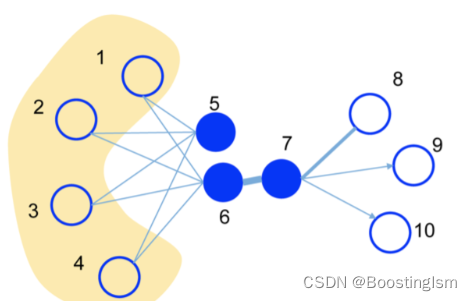
【Graph Net学习】LINE实现Graph Embedding
一、简介 LINE (Large-scale Information Network Embedding,2015) 是一种设计用于处理大规模信息网络的算法。它主要的目标是在给定的大规模信息网络中学习高质量的节点嵌入,并尽量保留网络中信息的丰富性。其具体的表现为在一个低 维空间里以向量形式表示网络中的…...

docker安装使用xdebug
docker安装使用xdebug 1、需要先安装PHP xdebug扩展 1.1 到https://pecl.php.net/package/xdebug下载tgz文件,下载当前最新稳定版本的文件。然后把这个tgz文件放到php/extensions目录下,记得install.sh中要替换解压的文件名: installExtensio…...
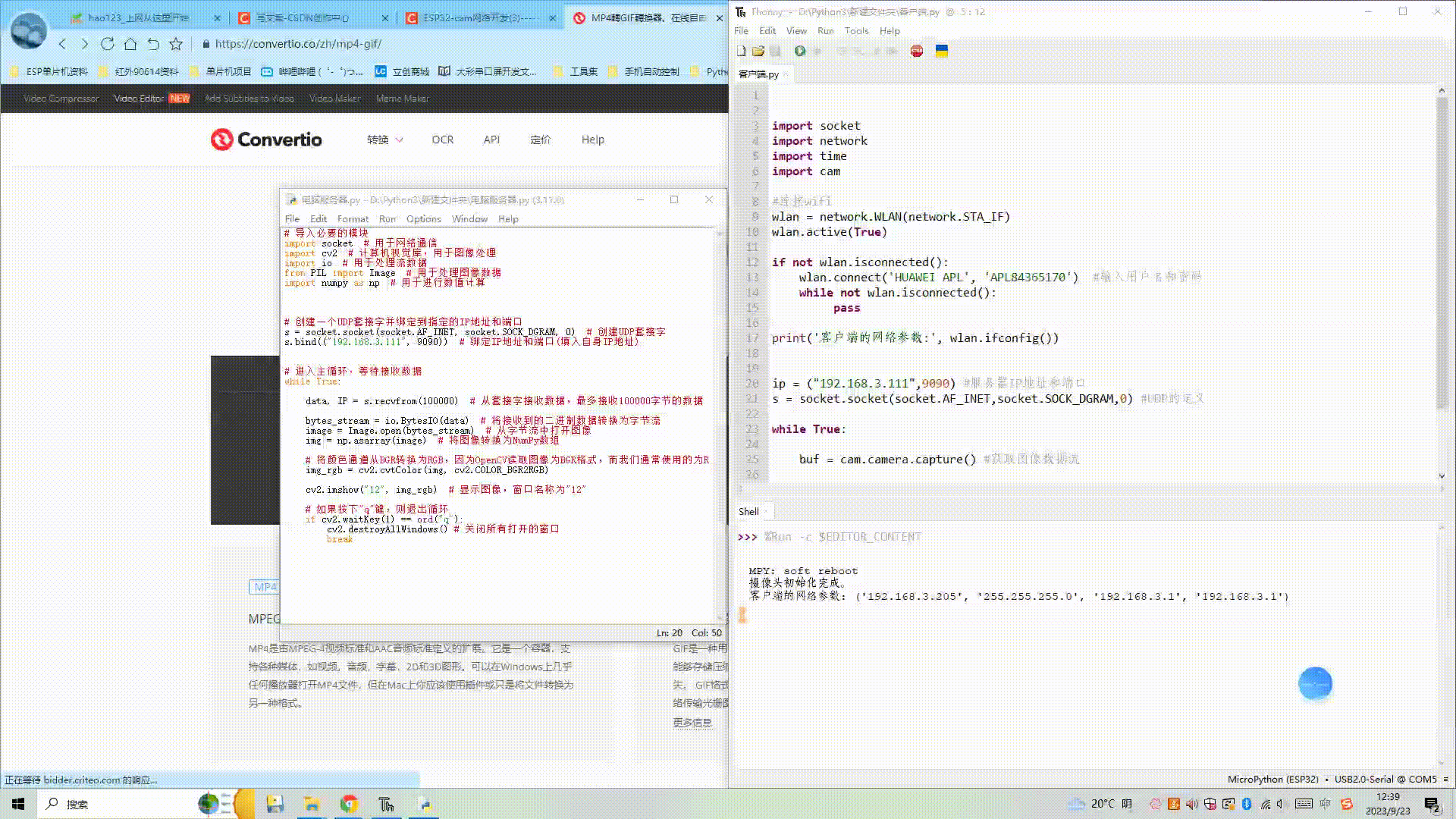
(1) ESP32获取图像,并通过电脑端服务器显示图像
目录 一、所需器件工具 二、客户端与服务器进行UDP通信 1、客户端代码 2、服务器端代码 3、效果展示 三、客户端拍照,通过UDP传输到服务器进行显示 1、客户端获取图像并UDP传输 2、电脑端服务器显示图像 3、效果展示 四、代码链接 一、所需器件工具 1.ESP3…...

乐鑫科技全球首批支持蓝牙 Mesh Protocol 1.1 协议
乐鑫科技 (688018.SH) 非常高兴地宣布,其自研的蓝牙 Mesh 协议栈 ESP-BLE-MESH 现已支持最新蓝牙 Mesh Protocol 1.1 协议的全部功能,成为全球首批在蓝牙技术联盟 (Bluetooth SIG) 正式发布该协议之前支持该更新的公司之一。这意味着乐鑫在低功耗蓝牙无线…...

1.算法——数据结构学习
算法是解决特定问题求解步骤的描述。 从1加到100的结果 # include <stdio.h> int main(){ int i, sum 0, n 100; // 执行1次for(i 1; i < n; i){ // 执行n 1次sum sum i; // 执行n次} printf("%d", sum); // 执行1次return 0; }高斯求和…...

信息论基础第二章阅读笔记
信息很难用一个简单的定义准确把握。 对于任何一个概率分布,可以定义一个熵(entropy)的量,它具有许多特性符合度量信息的直观要求。这个概念可以推广到互信息(mutual information),互信息是一种…...

Content-Type的取值
接口发送参数、接收响应数据,都需要双方约定好使用什么格式的数据,例如 json、xml。只有双方按照约定好的格式去解析数据才能正确的收发数据。而 Content-Type 就是用来告诉你数据的格式,这样我们才能知道怎么解析参数。 常见的 Content-Typ…...

【趣味JavaScript】5年前端开发都没有搞懂toString和valueOf这两个方法!
🚀 个人主页 极客小俊 ✍🏻 作者简介:web开发者、设计师、技术分享博主 🐋 希望大家多多支持一下, 我们一起进步!😄 🏅 如果文章对你有帮助的话,欢迎评论 💬点赞…...

Python中的接口是什么?
在Python中,接口是一种约定或协议,用于定义类应该实现哪些方法或属性。接口并不会提供实际的实现,而是只定义了类应该具有哪些方法和属性的签名。 Python中的接口通常通过抽象基类(Abstract Base Class,简称ABC&#…...
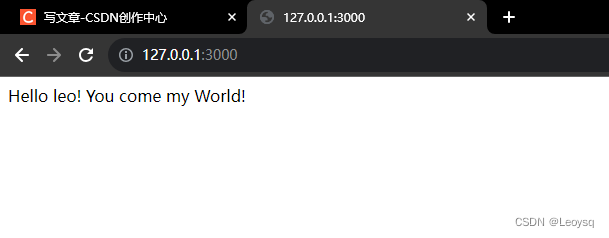
自学WEB后端01-安装Express+Node.js框架完成Hello World!
一、前言,网站开发扫盲知识 1.网站搭建开发包括什么? 前端 前端开发主要涉及用户界面(UI)和用户体验(UX),负责实现网站的外观和交互逻辑。前端开发使用HTML、CSS和JavaScript等技术来构建网页…...

从C语言到C++:C++入门知识(1)
朋友们、伙计们,我们又见面了,本期来给大家解读一下有关C语言的相关知识点,如果看完之后对你有一定的启发,那么请留下你的三连,祝大家心想事成! C 语 言 专 栏:C语言:从入门到精通 数…...

服务器(Windows系统)自建filebrowser网盘服务器超详细教程
需要依赖(工具) 轻量服务器(云服务器)一台 —— 环境Windows Server 2019filebrowser安装包(https://github.com/filebrowser/filebrowser/releases) 下载安装filebrowser 进入链接下载:https:/…...

扩展欧几里得
扩展欧几里得算法 求 a x b y d axbyd axbyd 的一组解, d gcd ( a , b ) d \gcd(a,b) dgcd(a,b)。 辗转相除递归求解。 假设已经求出 b x ( b m o d a ) y d bx (b \bmod a)y d bx(bmoda)yd 的一组解。 a x b y b x ′ ( b m o d a ) y ′ b x …...
)
MySQL 事务介绍 (事务篇 一)
什么是事务? 事务是一组操作的集合,它是一个不可分割的工作单位,事务会把所有的操作作为一个整体一起向系统提交或撤销操作请求,即这些操作要么同时成功,要么同时失败。 注意点:默认MySQL的事务是自动提交…...
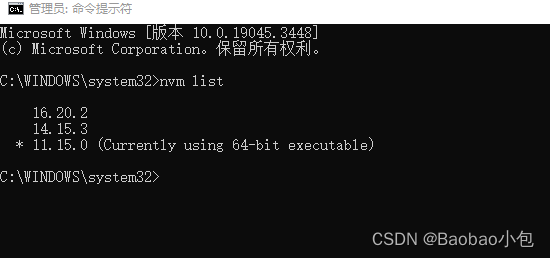
nvm nodejs的版本管理工具
nvm 全英文名叫 node.js version management,是一个 nodejs 的版本管理工具,为了解决 nodejs 各种版本存在不兼容现象可以通过他安装和切换不同版本的 nodejs。 一、完全删除之前的 node 和 npm 1. 打开 cmd 命令窗口,输入 npm cache clean…...
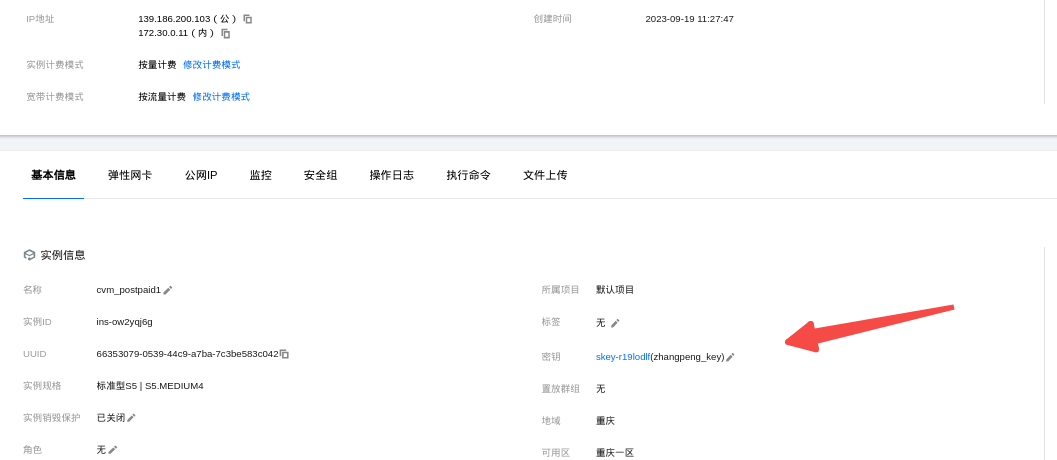
terraform简单的开始-vpc cvm创建
从网络开始 从创建VPC开始 复用前面的main.tf的代码: terraform {required_providers {tencentcloud {source "tencentcloudstack/tencentcloud"version "1.81.25"}} } variable "region" {description "腾讯云地域"…...
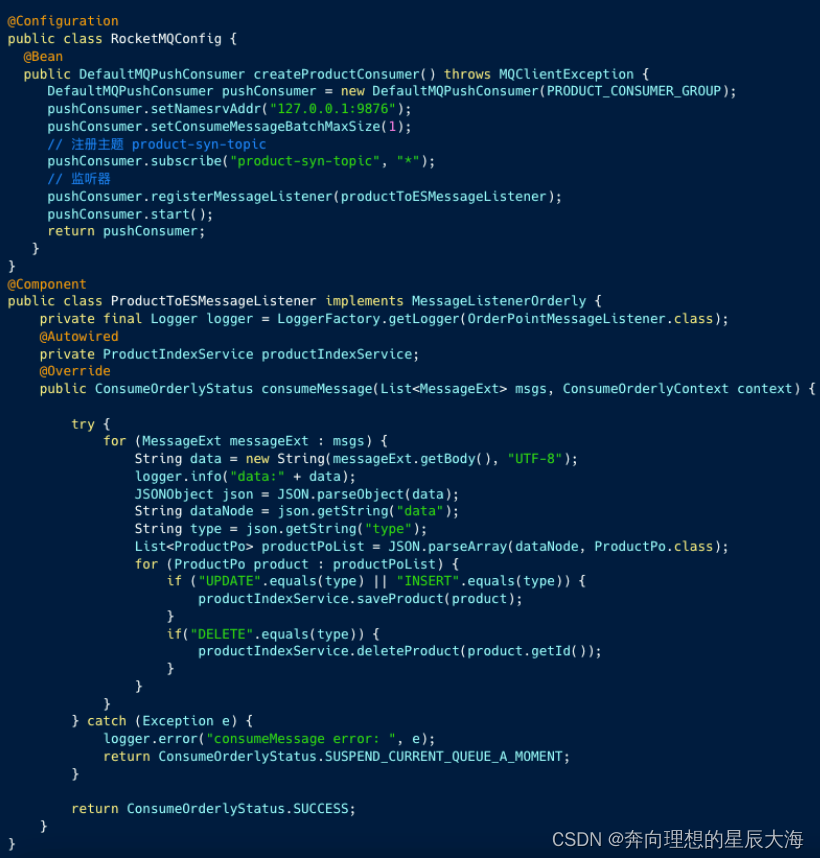
【MySQL】开启 canal同步MySQL增量数据到ES
开启 canal同步MySQL增量数据到ES canal 是阿里知名的开源项目,主要用途是基于 MySQL 数据库增量日志解析,提供增量数据订阅和消费。示使用 canal 将 MySQL 增量数据同步到ES。 一、集群模式 图中 server 对应一个 canal 运行实例 ,对应一…...

密码学概论
1.密码学的三大历史阶段: 第一阶段 古典密码学 依赖设备,主要特点 数据安全基于算法的保密,算法不公开,只要破译算法 密文就会被破解, 在1883年第一次提出 加密算法应该基于算法公开 不影响密文和秘钥的安全ÿ…...

渗透测试中的前端调试(一)
前言 前端调试是安全测试的重要组成部分。它能够帮助我们掌握网页的运行原理,包括js脚本的逻辑、加解密的方法、网络请求的参数等。利用这些信息,我们就可以更准确地发现网站的漏洞,制定出有效的攻击策略。前端知识对于安全来说,…...
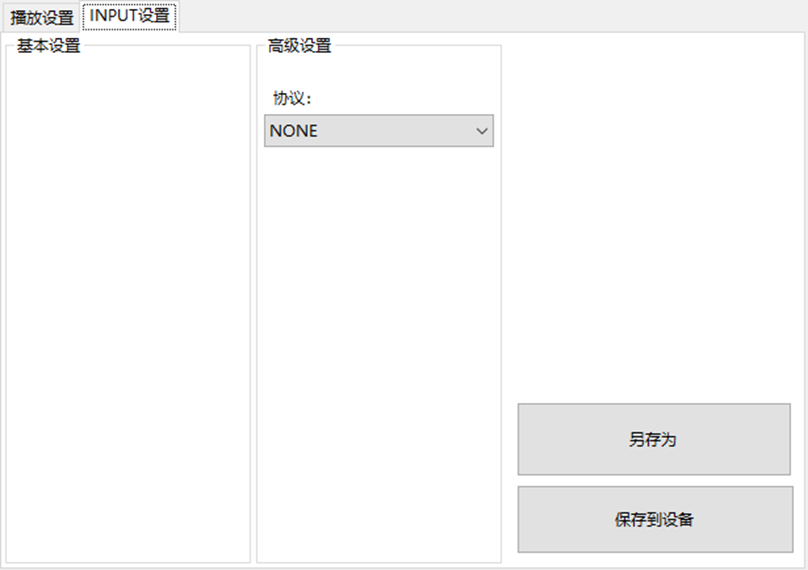
LBE-LEX系列工业语音播放器|预警播报器|喇叭蜂鸣器的上位机配置操作说明
LBE-LEX系列工业语音播放器|预警播报器|喇叭蜂鸣器专为工业环境精心打造,完美适配AGV和无人叉车。同时,集成以太网与语音合成技术,为各类高级系统(如MES、调度系统、库位管理、立库等)提供高效便捷的语音交互体验。 L…...

java_网络服务相关_gateway_nacos_feign区别联系
1. spring-cloud-starter-gateway 作用:作为微服务架构的网关,统一入口,处理所有外部请求。 核心能力: 路由转发(基于路径、服务名等)过滤器(鉴权、限流、日志、Header 处理)支持负…...
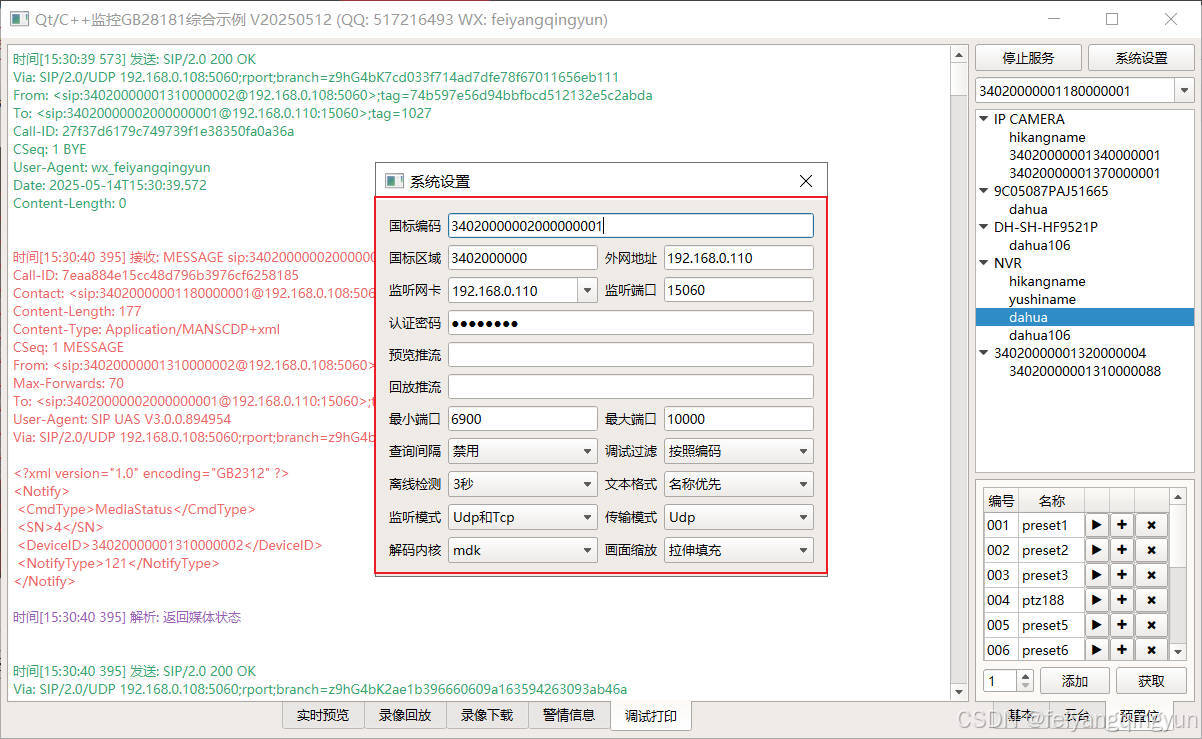
Qt/C++开发监控GB28181系统/取流协议/同时支持udp/tcp被动/tcp主动
一、前言说明 在2011版本的gb28181协议中,拉取视频流只要求udp方式,从2016开始要求新增支持tcp被动和tcp主动两种方式,udp理论上会丢包的,所以实际使用过程可能会出现画面花屏的情况,而tcp肯定不丢包,起码…...

K8S认证|CKS题库+答案| 11. AppArmor
目录 11. AppArmor 免费获取并激活 CKA_v1.31_模拟系统 题目 开始操作: 1)、切换集群 2)、切换节点 3)、切换到 apparmor 的目录 4)、执行 apparmor 策略模块 5)、修改 pod 文件 6)、…...

ETLCloud可能遇到的问题有哪些?常见坑位解析
数据集成平台ETLCloud,主要用于支持数据的抽取(Extract)、转换(Transform)和加载(Load)过程。提供了一个简洁直观的界面,以便用户可以在不同的数据源之间轻松地进行数据迁移和转换。…...

【git】把本地更改提交远程新分支feature_g
创建并切换新分支 git checkout -b feature_g 添加并提交更改 git add . git commit -m “实现图片上传功能” 推送到远程 git push -u origin feature_g...
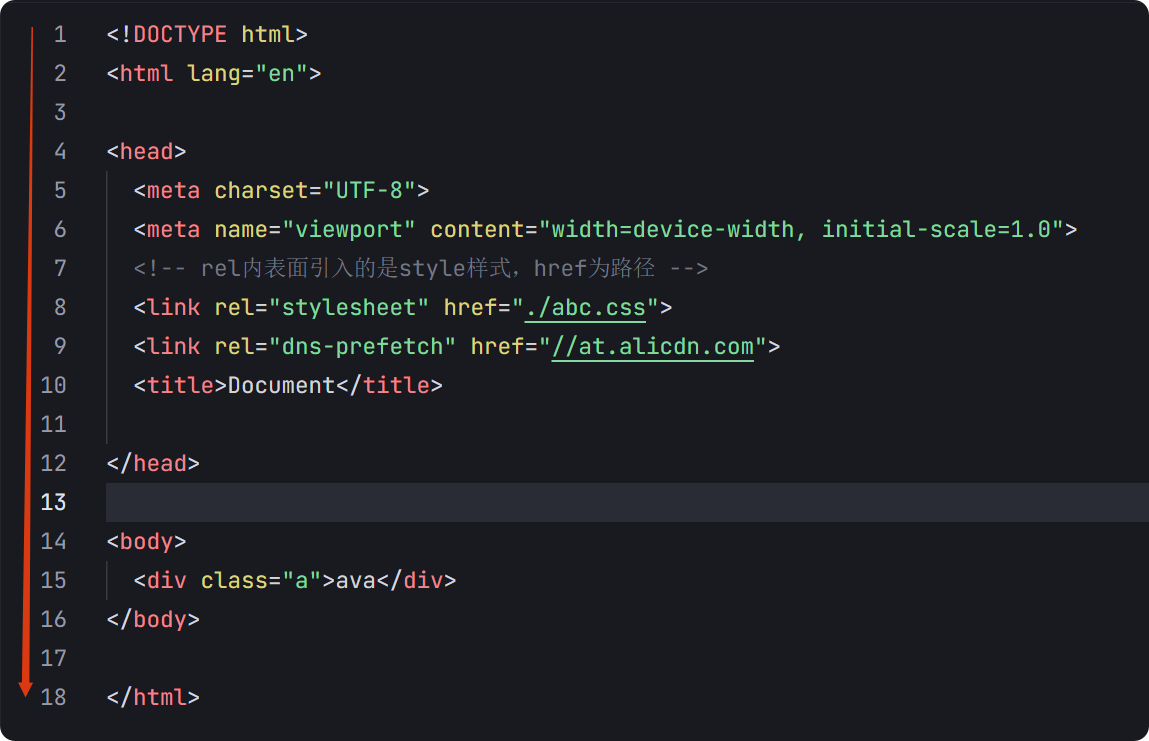
04-初识css
一、css样式引入 1.1.内部样式 <div style"width: 100px;"></div>1.2.外部样式 1.2.1.外部样式1 <style>.aa {width: 100px;} </style> <div class"aa"></div>1.2.2.外部样式2 <!-- rel内表面引入的是style样…...
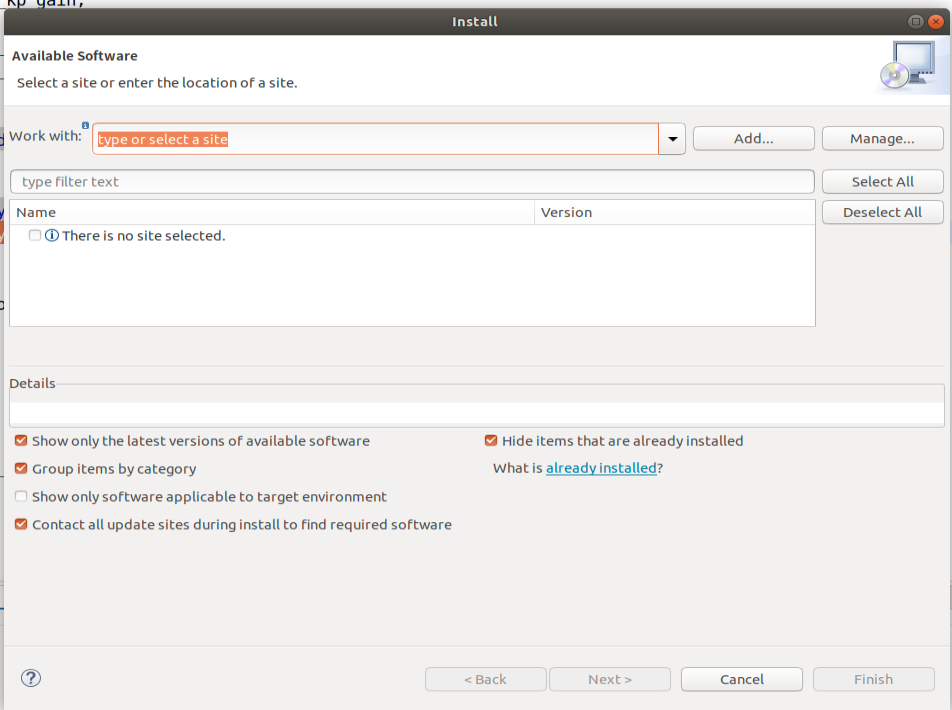
ardupilot 开发环境eclipse 中import 缺少C++
目录 文章目录 目录摘要1.修复过程摘要 本节主要解决ardupilot 开发环境eclipse 中import 缺少C++,无法导入ardupilot代码,会引起查看不方便的问题。如下图所示 1.修复过程 0.安装ubuntu 软件中自带的eclipse 1.打开eclipse—Help—install new software 2.在 Work with中…...
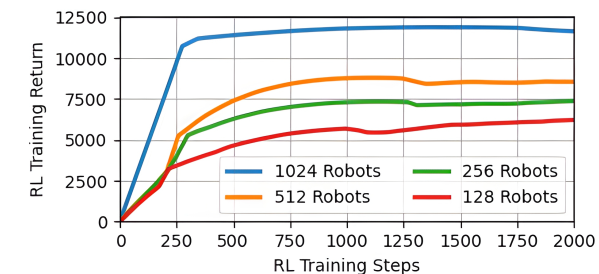
【VLNs篇】07:NavRL—在动态环境中学习安全飞行
项目内容论文标题NavRL: 在动态环境中学习安全飞行 (NavRL: Learning Safe Flight in Dynamic Environments)核心问题解决无人机在包含静态和动态障碍物的复杂环境中进行安全、高效自主导航的挑战,克服传统方法和现有强化学习方法的局限性。核心算法基于近端策略优化…...

MySQL 8.0 事务全面讲解
以下是一个结合两次回答的 MySQL 8.0 事务全面讲解,涵盖了事务的核心概念、操作示例、失败回滚、隔离级别、事务性 DDL 和 XA 事务等内容,并修正了查看隔离级别的命令。 MySQL 8.0 事务全面讲解 一、事务的核心概念(ACID) 事务是…...
